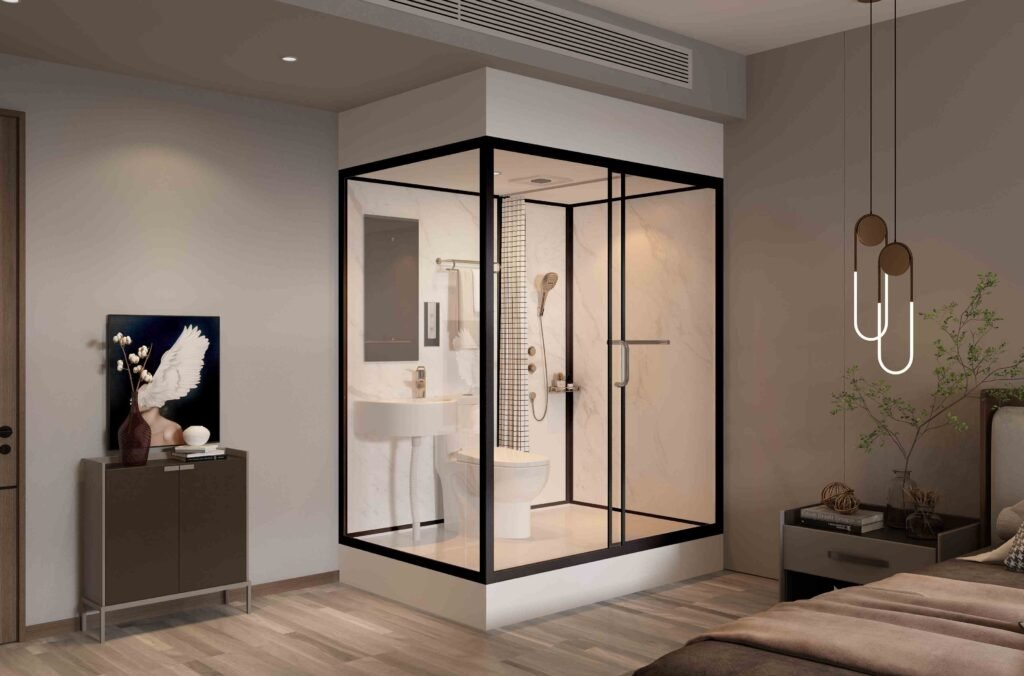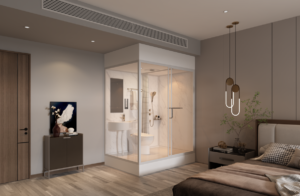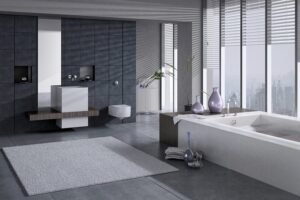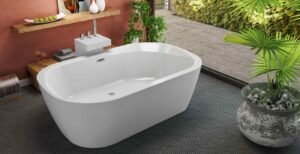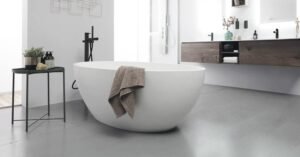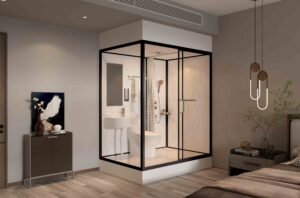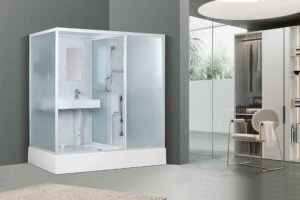For a disabled person, safety and convenience are crucial factors that matter when using the bathroom.
Making the all-in-one bathroom disabled-friendly is necessary in today’s time and age. That ensures that people suffering from mobility issues can shower and bathe easily.
Fortunately, certain bathroom items can make that possible!
Support bars, shower seats, transfer benches, raised toilet seats, bath mats, and curbless showers are the must-have items in prefab bathrooms for disabled people. These items can combine aesthetics and easy access for people with disabilities.
What Are The Essential Items In Prefab Bathrooms For Disabled People?
There are six must-have items in a modular bathroom for disabled people — grab bars, shower seats, transfer benches, raised toilet seats, bath mats, and curbless showers. With these installed, a prefabricated bathroom can be better equipped to cater to aging and disabled individuals.
A bathroom pod or enclosure is a cramped space with sharp corners and hard surfaces. The addition of water is not making it any safer. These will cause serious issues for people with disabilities, chronic illnesses, or injuries.
By installing these modifications, a homeowner achieves a convenient and accessible bathroom unit. With an accessible bathroom, an aging or disabled person can enjoy more independence and privacy.This article will go into detail about the different mobility-related bathroom aids that can accommodate a disabled person’s needs.
#1 Support Bars
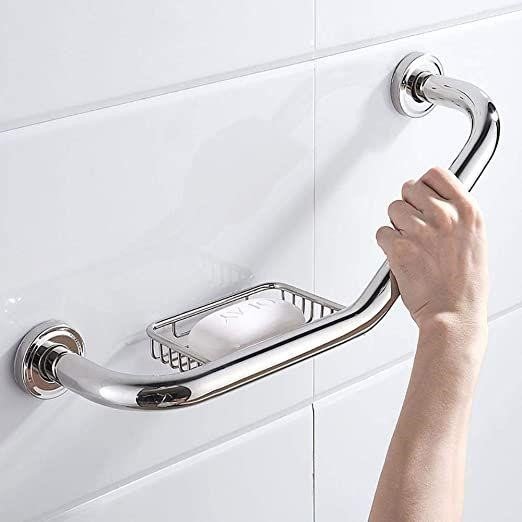
Homeowners can install grab rails or support bars anywhere in their modular bathroom. They are readily available in many shapes and styles, giving them more options.
There are plenty of minimalist and ergonomic bars in the market. Most have a textured grip and can be temporarily or permanently installed in a prefab bathroom.
Standard placements and areas of grab bars are as follows:
- Shower
- Bathtub
- Walls near the toilet
- Beside the sink or cabinet
Standard support bars are wall-mounted, making them easy to place at any location or height. Also, these bars can serve as safe handholds while transferring someone out of a wheelchair.
It is also useful in helping steady a person while showering. They can also offer stability while lowering onto or rising from the toilet.
#2 Shower Seats
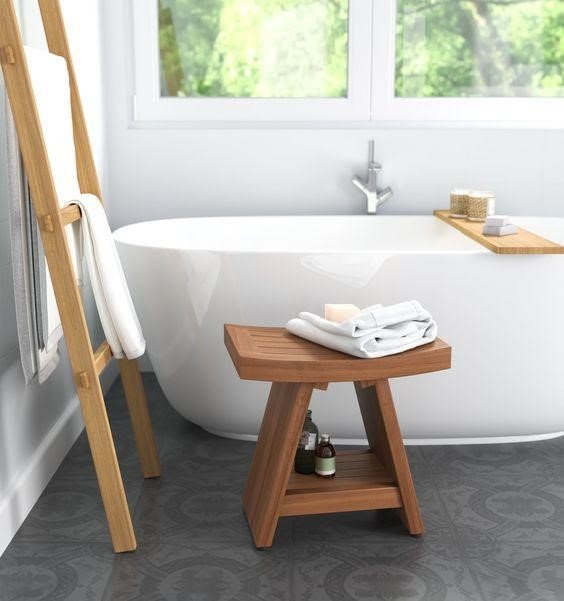
Shower seats are another essential to creating a disabled-friendly bathroom. They are permanently installed or movable seats in a shower or tub.
Currently, there are several shower seats, each with its purpose. Shower chairs are a standard option since they have side handles that offer extra support and grip. They also have a back that gives a person better balance.
Another option is shower stools, which are backless seats that are either movable or fixed. They help people with reduced mobility or low strength.
#3 Transfer Benches
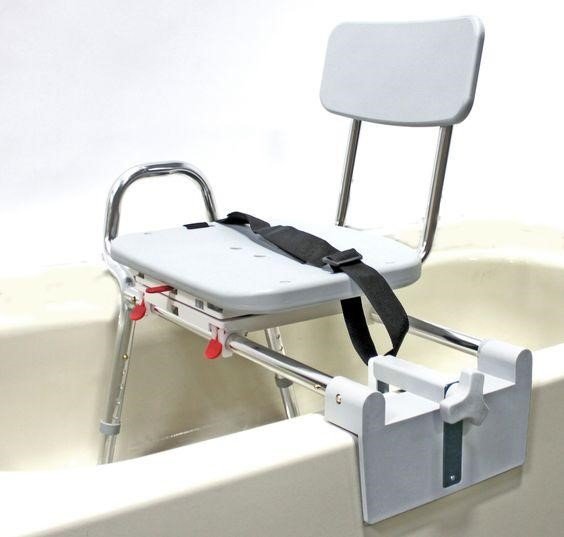
A transfer bench is an assistive, bath-safety mobility device that helps a person get in and out of a tub. They are most helpful to people in wheelchairs.
The standard transfer bench design allows its two legs to stand outside the tub with the other two legs placed inside. The bench crosses over the tub wall, eliminating the need to climb in and out.
Often, transfer benches are wider than standard shower chairs. That space ensures the body is fully supported when entering and exiting the bathtub.
#4 Raised Toilet Seats
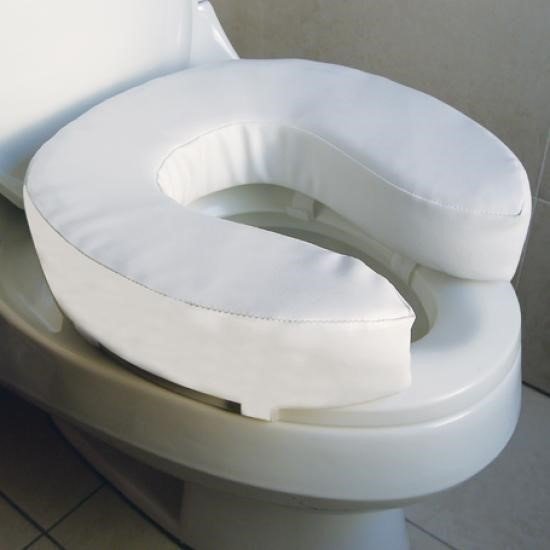
A raised toilet seat is another essential assistive item to turn a bathroom into an accessible space. The device goes on top of the toilet, providing greater height.
This toilet raiser is mainly for people who struggle to crouch or sit down, like older people or those with joint pain. These elevated seats come in various heights, ranging from 2-6 inches.
They are often universal, fitting most oval and round-shaped toilet bowls. Yet, there are variations on how they lock into the bowl and whether or not they have arms.
Toilet raisers are often made of plastic, with some having metal armrests for better stability and easier transition. Ultimately, the extra height on the toilet makes it so that some people can be independent while using it.
#5 Bath Mats
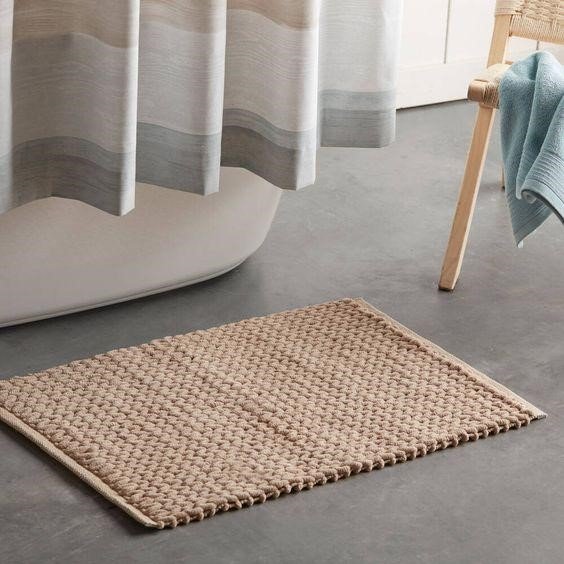
Another excellent solution in a prefab bathroom is non-slip bathroom mats, which will help lessen the chances of slipping or falling. These non-slip mats will give people peace of mind.
A bath mat sits directly outside the shower or bathtub so it can be ready to absorb splashes and excess water. That ensures the bathroom floor remains dry and clean.
Bath mats are light and highly absorbent. Homeowners often find bath mats part of a bath towel collection. That makes coordinating and staying true to a color scheme and style effortless.
#6 Curbless Shower
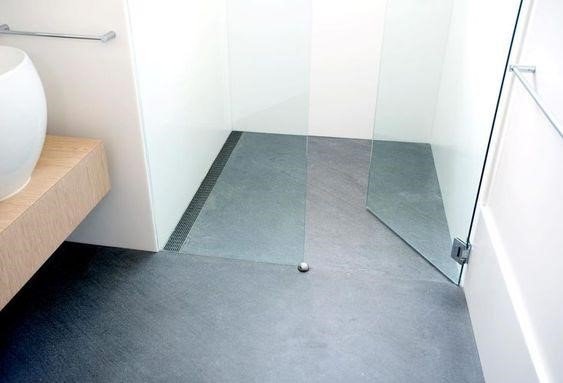
While many prefab bathrooms have shallow curbs to prevent water from flowing to the floor, plenty of units have no curbs. These are called curbless showers.
As the name implies, a curbless shower has no curb or threshold. This shower type is level to the floor, which warrants easy entry and exit.
It is also excellent for wheelchairs as it can allow for effortless entry and exit of the shower room.
What Are More Ways To Make A Prefab Bathroom More Accessible?
Homeowners must choose the design to make their shower easily accessible to disabled family members. Aside from assistive items, here are other tips that can transform a bathroom into a disabled-friendly space:
- Widen the doorway to allow easy entry of a walker or wheelchair.
- Lower shelves, cabinets, and other storage areas.
- Smooth out the transition between the bathroom flooring and the hallway flooring.
- Remove unnecessary and messy clutter since it can cause injury-inducing accidents.
- Buy a long-handle brush to help people with mobility issues or joint pain.
- A sink is better wall-mounted with no cabinet underneath to make space for wheelchair users.
- Faucets should easily turn on and off without firmly grasping or twisting the handle.
- Good lighting is necessary. Evenly distribute the lights to the entire bathroom space to avoid glare.
- Consider the best and easiest access for all bathroom accessories. That includes soap dispensers, toothbrush holders, towel bars, robe hooks, and shower shelves.
Wrap Up
A prefab bathroom should be accessible for everyone in the household, especially to disabled and aging family members. To make accessible prefab bathrooms for disabled people, invest in assistive aid items to make bathing easier.
If possible, remodel the bathroom to include a shower or tub that can better accommodate wheelchair users. When in doubt, contact a healthcare provider for more assistive tool options.

